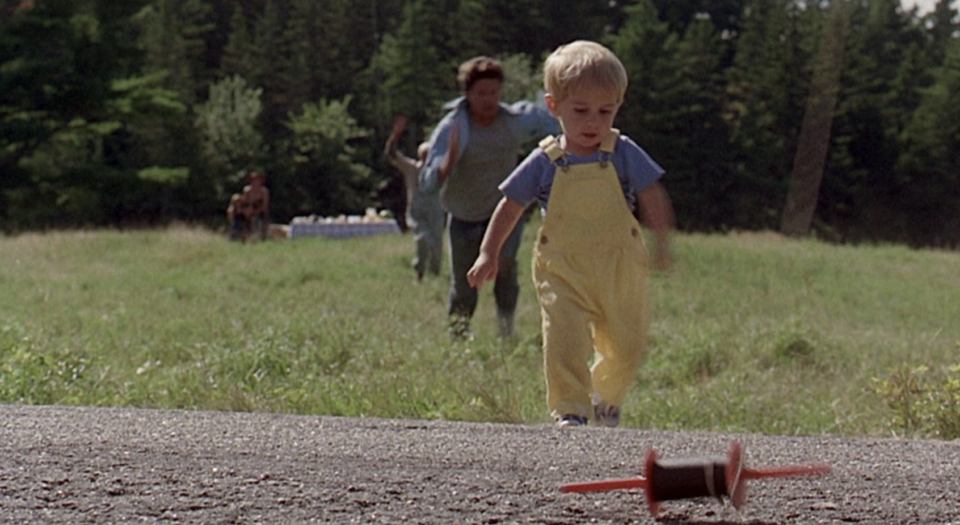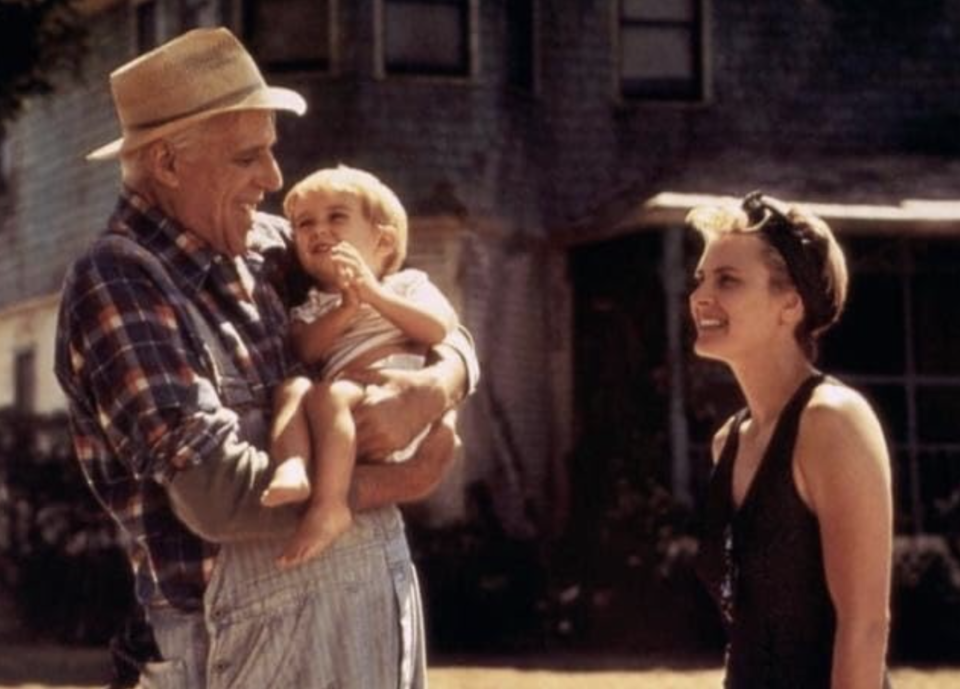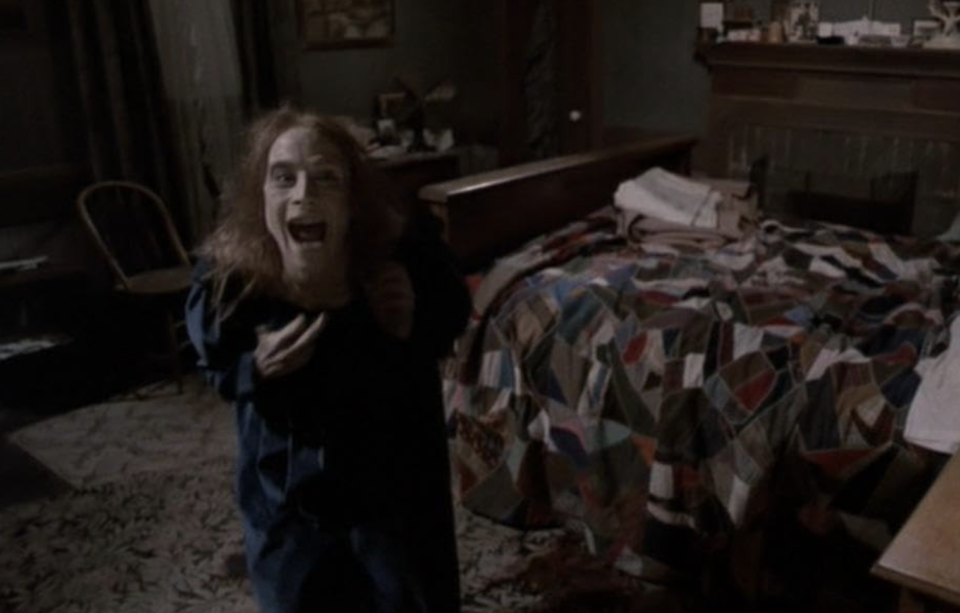‘Pet Sematary’ Revisited: The Quintessential Stephen King Story

Stephen King may be the bestselling author of the past 100 years, but adaptations of his films tend to be a mixed bag. For every Misery, Stand By Me, and The Shawshank Redemption, it seems there’s a Maximum Overdrive, The Mangler, and Graveyard Shift. With a talent for bringing the reader inside the heads of his characters, King excels at nuanced internal monologue that doesn’t always translate to the screen. It takes a special director to capture the blend of folksy Americana, flawed humanity, and mind-bending terror that epitomizes a Stephen King story.
Of all the many adaptations to hit the big screen over the last half century, few feel so much like the author himself as Mary Lambert’s Pet Sematary. With an empathetic script hewing close to the source material and a reverence for King’s overall oeuvre, Lambert captures the dark and twisted heart of King’s 1983 novel and delivers a film that still packs a mean punch more than thirty years later.
We first meet the Creed family—Louis (Dale Midkiff), Rachel (Denise Crosby), Ellie (Blaze Berdahl), and Gage (Miko Hughes)—as they move into an idyllic house on a country road in Ludlow, Maine. Moving to the country from Chicago, Louis has just accepted a job as the head physician at a nearby university. The elderly widower Jud Crandall (Fred Gwynne) who lives across the street, befriends them right away and soon after takes the family on a hike to a quaint, little Pet Sematary in the woods bordering their house.
When a dying man named Victor Pascow (Brad Greenquist) is brought into Louis’s clinic, he coughs out an ominous warning before passing away in a pool of blood. His mangled ghost appears to Louis later that night, warning him of the forest’s grave dangers and a barrier not meant to be broken. However, when Ellie’s cat dies in the road, Jud leads Louis past the Pet Sematary to a burial ground hiding a hideous power. With the scent of death in the air, whatever lurks in the woods descends on the Creed family. Gage soon falls victim to the road as well and Louis attempts to use the sour burial ground to reverse the awful tragedy only to find that, “sometimes, dead is better.”
In a new introduction to the novel, King names Pet Sematary as the story from his own catalog that scares him most. Recounting an incident in which his young son ran into a busy road, the novelist describes following the “what if” of his darkest fears and producing a novel he deemed too upsetting to print.
The story confronts us with the reality of death and the particular nightmares that accompany raising young children. In addition to gruesome carnage, murderous monsters, and midnight walks through haunted woods, Pet Sematary pulses with the exquisite pain of loving a child knowing that the cruel hands of death could reach out and grab them at any moment. Following Louis as he causes the destruction of his family by attempting to reanimate the body of his dead toddler allowed the author to play out the worst-case scenario. It scratched a mental itch for destruction and expelling the visions of disaster likely plaguing his mind.

With such a personal story, perhaps this is why King chose to write the screenplay himself, not trusting anyone else with a tale that cuts so close to the bone. After Gage’s death, Louis makes the unthinkable decision to dig up the tiny body of his son and bury him again deep in the woods knowing that whatever returns may be driven by a demonic force. As unthinkable as the violent death of a toddler may be, few of us could ever imagine breaking into a graveyard with the intent of unearthing the decomposing body of our child.
However, King manages to make Louis’s plight relatable. Flexing his narrative muscles, King pulls us into the hellish reality of the young father’s darkest days and not only convinces us that he would actually make this devastating choice, but causes us to question whether we might not do the same thing. In the hands of another writer, Louis’s destructive actions might feel like an unbelievable narrative device. But King manages to make it work and we follow Louis down the road to madness clinging to the vague hope that things will somehow turn out ok.
In addition to this empathy, King’s script is filled with the author’s particular brand of folksy charm. The story delivers its devastating blows in large part because we spend so much time with the Creeds as they adjust to rural life. Characters like Jud Crandall and Missy Dandridge (Susan Blommaert) perfectly encapsulate the small-town Maine setting for which King is known. Viewers not from the right-hand corner of the US can finally experience the small-town warmth that so often hides the author’s greatest horrors. Watching the film feels like taking a peek into King’s own childhood as the “ayuhs” and “ruds” surround us like a patchwork quilt. Pet Sematary also features King’s own career-best cameo as he stands in Bangor’s Mount Hope Cemetery serenading those gathered at the graveside with the Lord’s Prayer.
Lambert shot the film on location in Maine and used as much of the local landscape and personage as possible when bringing the film to life. John Campopiano’s fantastic documentary Unearthed & Untold: The Path to Pet Sematary chronicles the intrinsically “Maine” feel of the film as well as the director’s dedication to authenticity.
Lambert was also instrumental in procuring “Pet Sematary,” the film’s original song written and performed by the Ramones. Inspired by King’s novel, the tune plays over the closing credits and has become an anthem of sorts for Constant Readers around the world. In addition to this chart-topping hit, Lambert also uses the band’s “Sheena Is a Punk Rocker” for the pivotal scene in which Gage loses his life. King is a huge fan of the band and has often spoken about his habit of listening to rock music turned all the way up while writing. These catchy needle drops make us feel like we might be sitting in King’s own writing room while he weaves this terrifying tale and we can almost see the Master of Horror listening to “Brain Drain” while writing the next story to haunt our dreams.

King has created many memorable characters but few are so beloved among constant readers as Jud Crandall. We first meet the cinematic version of this fan-favorite protagonist as he’s picking up a stranger’s baby with the graceful nonchalance of a man 30 years younger. The toddler doesn’t bat an eye when he’s scooped up by these large country hands and his gentle, but direct honesty immediately convinces both Gage’s relieved parents and the audience of his good intent. The elderly man steps into Louis’s life as an unwitting father figure and quickly becomes the compassionate role model we all wish we could have had.
With his beers on the porch, knowledge of folk remedies, and an uncanny ability to read just about any situation, we ease into this friendship like a warm bath on a cold night. Fred Gwyn anchors the film as the overall-wearing stalwart making us feel safe in his sturdy performance even though the story itself is careening head-first into the fires of hell. Along with Kathy Bates as Annie Wilkes, Jack Nicholson as Jack Torrance, and Morgan Freeman as Red, Gwyne’s Jud remains one of the novelist’s most beloved cinematic creations.
In addition to Jud, Lambert flawlessly brings to life one of the novel’s trickiest characters. Pascow enters the story with his head smashed open but quickly becomes one of the film’s most reassuring elements. With gruesome makeup effects created by Lance and David Anderson, Pascow manages to terrify and comfort as the story goes on, becoming the would-be savior we hope will be able to hold the Creed family together.
And what vintage King novel would be complete without a precocious child with psychic powers? She may not have the raw power of Danny Torrance’s shining, but there’s no doubt that little Ellie Creed possesses a deeper connection to the spirit world. She somehow knows about Louis’s awful plans to unearth Gage’s body, sensing that something isn’t right even though she’s too young to understand. After giving up on guiding Louis, Pascow tries to send Ellie messages and warns her of the impending death of her mother. Berdahl brings heart and reality to a role that ranges through excitement, worry, grief, and panic—no easy feat for a child actor—and her eerie perception adds a level of deception to Louis’s otherwise altruistic choices.
Though Ellie may be the story’s most King-like young character, Gage is the film’s beating heart. Just three years old in his feature film debut, Hughes is simply adorable in the role making his descent into murderous chaos ever more disturbing. Few genre images are so powerful as the sight of this scarred child swinging a scalpel and then slicing into the face of a man five times his size. His ominous “Now, I want to play with you,” and “I brought you something, mommy,” followed by a sweet yet sinister giggle allows us to sympathize with grieving parents as they attempt to hug a child clearly threatening to kill them.
After all the terror of Gage’s murderous rampage, his second death is perhaps the film’s most cutting moment. The monstrous toddler quickly transforms back into a sweet little boy as Louis is forced to inject his neck with poison. Gage’s heartbreakingly sweet cries of “no fair, no fair” immerse us in the novel’s nearly unbearable streak of emotional horror.

In the midst of this macabre chaos lies the film’s most potent imagery. As an eight-year-old girl, Rachel witnessed the slow demise of her sister Zelda (Andrew Hubatsek) and still carries deep emotional scars surrounding her death. King’s descriptions of this frightening character pale in comparison to Hubatsek’s nightmarish performance as Zelda taunts an adult Rachel and scuttles across the floor. Many children of the 80s grew up afraid to turn off their lights lest she rush toward us screaming, “Never get out of bed again! Never get out of bed again!”
Combined with the glowing eyes and frightening hiss of the undead Church, Lambert creates a concoction of horror few films have been able to match. It’s nearly impossible to watch the final act without lifting our own feet to avoid the tiny Gage who may be hiding near our own heels, scalpel poised to cut into our Achilles tendons. Her use of practical effects builds on the overwhelming dread to destabilize the audience as these terrors converge in Jud’s crumbling house.
Lambert’s adaptation would likely have fallen into the cinematic wheels of time if not for its devotion to the source material. Though some changes have been made to condense a detailed plot, she never forgets that the story’s stony heart lies in the unlikely friendship between Louis and Jud and the ruination of a loving family. Like the best of King’s novels, Pet Sematary works on multiple levels, the tangible scares that eat away at our senses and the strong emotional current running through the story. By fully committing to the nuances of King’s folksy aesthetic and empathetic style, Lambert’s Pet Sematary allows us to confront our fears of death, tragedy, and loss while emerging–teary-eyed and screaming–on the other side.
Categorized:Editorials

